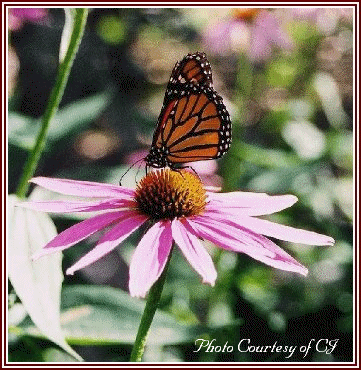
 Echinacea. USD 1926.
Echinacea. USD 1926.
Compiled and Edited by Ivor Hughes
ECHINACEA. N.F. ECHINACEA Echin.
Echinacea consists of the dried rhizome and roots of Brauneria pallida (Nuttall)
Britton or Brauneria angustifolia (De Candolle) Heller (Fam. Composites).
Echinacea contains not more than 3 per cent of foreign organic matter.
Echinacea must not be used after it has lost its characteristic odor and
taste. N.F.
Nigger-head; Pale Purple Coneflower
This composite perennial herb, a native of the prairie region of America
west of Ohio, has been introduced by the so-called eclectic physicians as a
remedy in divers' dissimilar diseases. It possesses lanceolate, three to
five nerved leaves and slender stems terminating in single, large, conical,
purplish heads of ligulate and tubular flowers. Its fruits are 4-sided
achenes, each with a short-toothed pappus. The drug is collected in autumn,
the commercial supplies coming from Kansas. Kraemer and Sollenberger (A.J.P.,
1911, p. 315) have described the physical characteristics of the drug.
Description and Physical Properties. Unground Echinacea. Nearly
entire, cylindrical, very slightly tapering and sometimes spirally twisted,
from 10 to 20 cm. long and from 4 to 15 mm. in diameter; externally grayish
brown, light brown or purplish brown; slightly annulate in the upper
portion, with occasional stem scars somewhat longitudinally wrinkled, or
furrowed; fracture short, fibrous; bark less than 1 mm. thick, wood composed
of alternate light yellowish and black wedges; the rhizome with a circular
or angular pith. Odor faint, aromatic; taste sweetish, followed by a
tingling sensation, suggesting aconite, but lacking the persistent and
benumbing effect produced by that drug.
Structure. An outer cork composed of several layers of tabular cells with yellowish, walls and containing oil globules or granular masses; about 8 rows of tangentially elongated rather thick-walled parenchyma cells among which are oil or resin canals; in the rhizome portion are a few strongly lignified bast fibers -with thick walls and simple pores; a thick layer of parenchyma with numerous stone cells and oil or resin canals; characteristic carbon-like masses occur around the stone cells and fibers; sieve tissue in radial rows the latter separated by parenchyma containing inulin and extending to the middle bark; a distinct cambium zone of several rows of thin-walled cells; central portion made up of radially arranged groups of tracheas, separated by broad wedges of parenchyma, the latter with secretion canals and characteristic stone cells.
Powdered Echinacea. Grayish; numerous stone cells, strongly lignified, from 0.018 to 0.042 mm in diameter, many being very much elongated and carrying the characteristic carbon-like deposits; numerous tracheae from 0.025 to 0.075 mm in diameter and with simple pores, annular or reticulate markings, occasionally with bordered pores or double spiral markings; fragments of inulin-bearing parenchyma tissue, the latter showing oil or resin canals from 0.080 to 0145 mm in diameter and filled with a reddish brown or yellowish content; fragments of cork and a few fibers. N. F.
Heyl and Hart (J. Am. C. 8., 1915, xxxvii, p. 1769) found the drug to contain inulin, 5.9 per cent.; inuloid, 6; sucrose, 7; vulose, 4; betaine, 0.1, and resins, 1.9 per cent.; the latter consisting of two isomeric phytosterols, phytosterolin, and the following fatty acids, oleio, linolic, cerotic and palmitic, but could find no physiologically active substance.
Brauneria purpurea, DC., Britton (Rudbeckia purpurea L., Echinacea purpurea Moench), Black Sampson, Purple Cone-flower (Virginia to Illinois and southward to Louisiana), is similarly used.
Uses. Echinacea has been attributed with the property of increasing the resistance of the body to infection and is consequently used in boils, septicemia, and other infective conditions. Couch and Giltner (J. Agricult. Research, 1920, xx, 63) in a study on guinea-pigs failed to obtain any evidence of a beneficial effect in a variety of experimental infections. It is also attributed with aphrodisiac arid analgesic powers, but is probably without therapeutic value. Hale (Lancet Clinic, March, 1901) injects an extract into the rectum in the treatment of hemorrhoids.
Dose, of the fluidextract, fifteen to thirty minims (1-2 cc.).
Off. Prep. Fluidextractum Echinaceae, N. F.
![]()